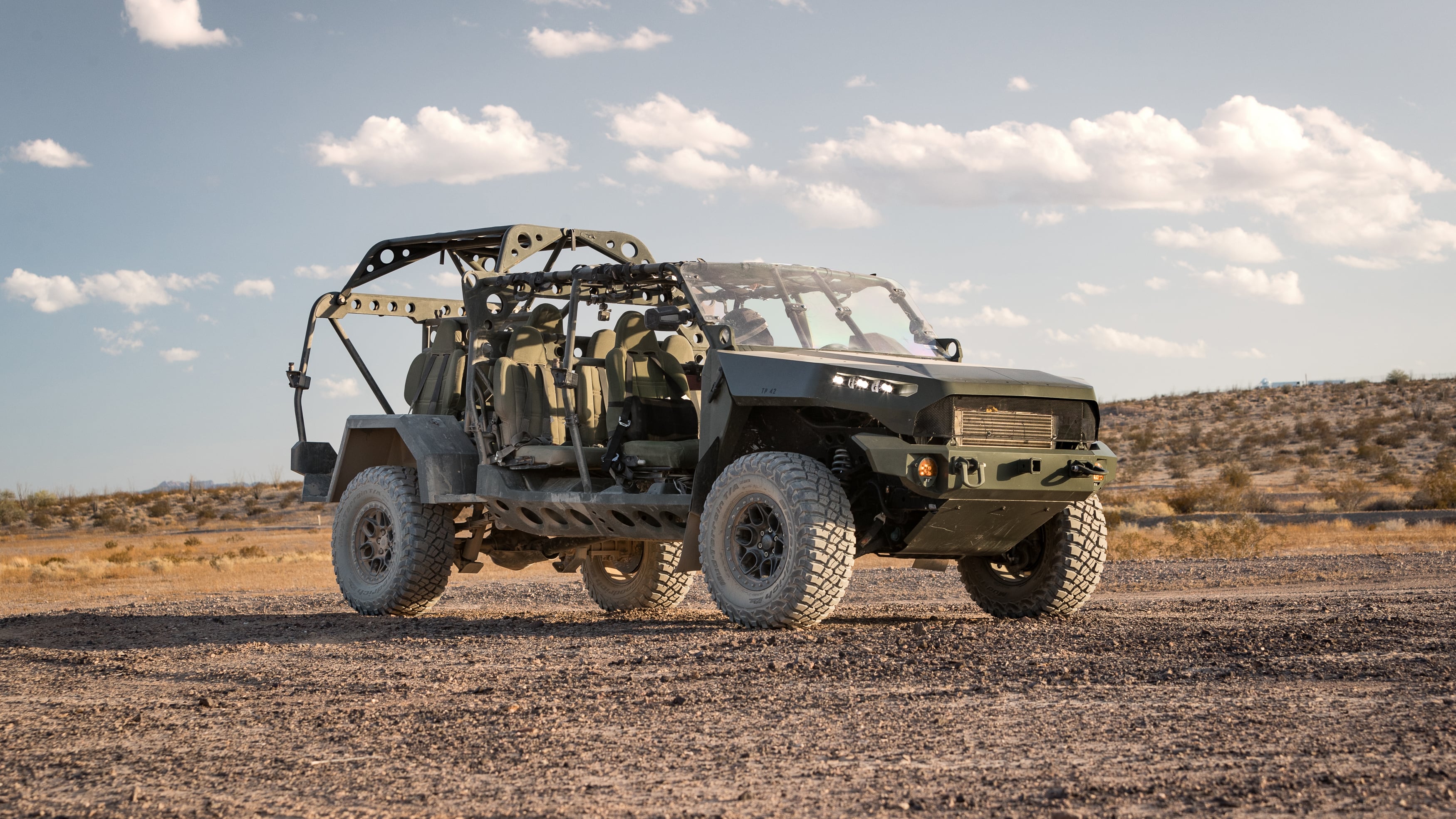Soldiers with the 82nd and 101st Airborne divisions recently kicked the tires of the Army’s new Infantry Squad Vehicle at Fort Bragg, North Carolina.
The ISV is being brought into the ground vehicle fleet to give ground-pounders a break, helping them cover terrain in a small insertion vehicle rather than hoofing the entire journey by foot.
That’s one reason the ISV program manager has nicknamed the vehicle a “better boot.”
The ISV is able to carry multiple days’ worth of personal and squad gear and sustainment and, due to its small size, can be transported by either air assault or airborne assault missions, according to a release from the Army’s Operational Test Command.
RELATED

According to the Army’s Acquisition Support Center website, the ISV has the following capabilities:
- Nine-man squad carrying capability
- Payload of 3,200 lbs.
- External sling load by a UH-60 Black Hawk helicopter
- Internal load/external lift by CH-47 Chinook helicopter
- Low-velocity air drop by fixed-wing C-130 or C-17 transport aircraft
- Exceptional mobility over all terrains
- Cover a range of 300 miles in a 72-hour period
Once the testing is done, the paratroopers of the 1st Brigade Combat Team, 82nd Airborne Division, are slated to be the first to receive the vehicle, said Maj. Howard VanMatre, ISV assistant program manager.
“The cargo straps are fantastic and there is enough room for rucks but there could be an improvement made to carry more food, water and fuel,” said Sgt. Garrison Reigle, 2nd Platoon, C Company, 1st Battalion, 504th Parachute Infantry Regiment.
He did add that more racks would be even better.
Capt. Brian Connell, commander of Company C, 1-504th PIR, said that the light infantry company can move their own construction and fortification materials to their areas of operation.
“Without the ISV we’d be out there cutting down trees to try to disrupt the enemy or doing what we could with our shovels,” Connell said.
GM Defense won the production contract in June 2020, to a tune of $214.3 million for the first 649 vehicles, Army Times previously reported.
The company based their design off of the 2020 Chevrolet Colorado ZR2 midsize truck and use 90 percent commercial parts, including a 186-horsepower, 2.8L Duramax turbo-diesel engine.
The initial production timeline runs to June 2028.

Eventually, 11 infantry brigade combat teams will be outfitted with 59 vehicles each under the first contract, Army Times reported.
Ultimately, the Army plans to purchase 2,065 ISVs.
The Defense Department’s lead weapons tester released a report in January stating that the nine-soldier load is a tight fit and the vehicle offers limited protection from certain threats. But it did meet requirements, the product lead told Army Times sister publication Defense News.
“All vendors’ ISVs are cramped and soldiers cannot reach, stow, and secure equipment as needed, degrading and slowing mission operations,” according to the report. During tests “soldiers on all ISVs could not readily access items in their rucksacks without stopping the movement, dismounting, and removing their rucksacks from the vehicle.”
The Army recently announced that General Dynamics is building a prototype lightweight electronic warfare system for the ISV.
The Tactical Electronic Warfare System-Infantry Brigade Combat Team, or TEWS-IBCT, is similar to a system deployed on Stykers in Europe.
Previously, units didn’t possess the electronic attack capability due to power constraints, David Morrison, director of Army initiatives for tactical ISR at General Dynamics, told Army Times’ sister publication C4ISRNET in August.
Todd South has written about crime, courts, government and the military for multiple publications since 2004 and was named a 2014 Pulitzer finalist for a co-written project on witness intimidation. Todd is a Marine veteran of the Iraq War.




